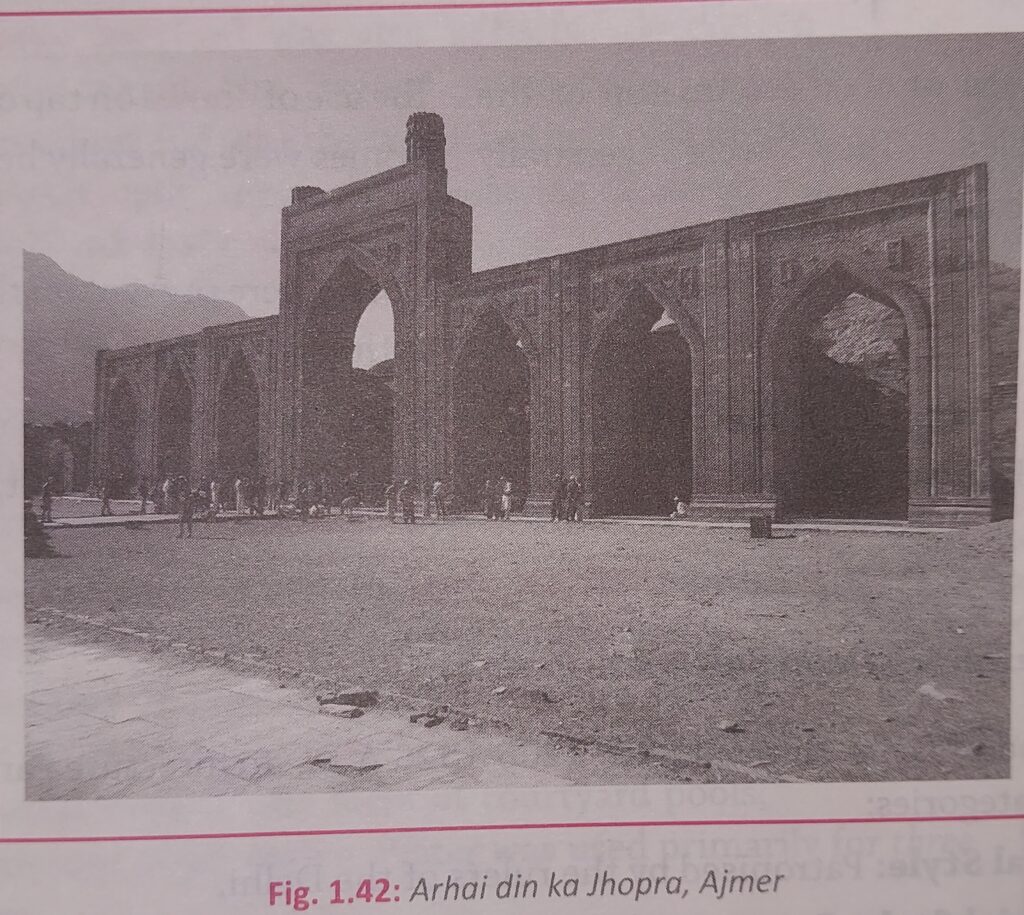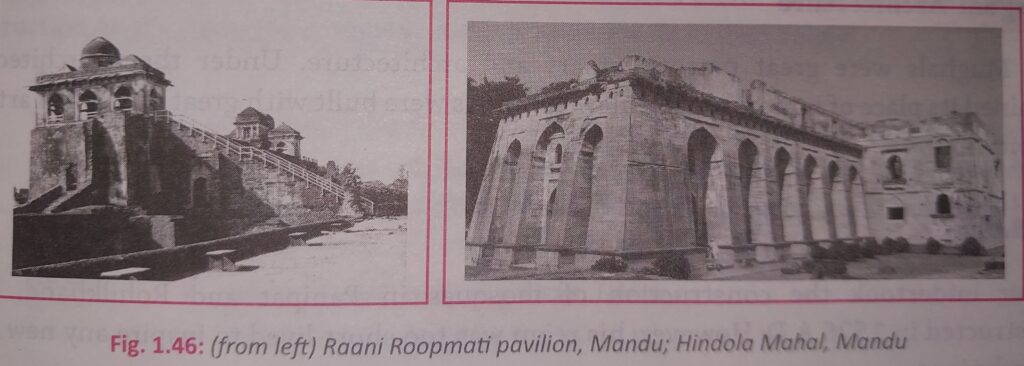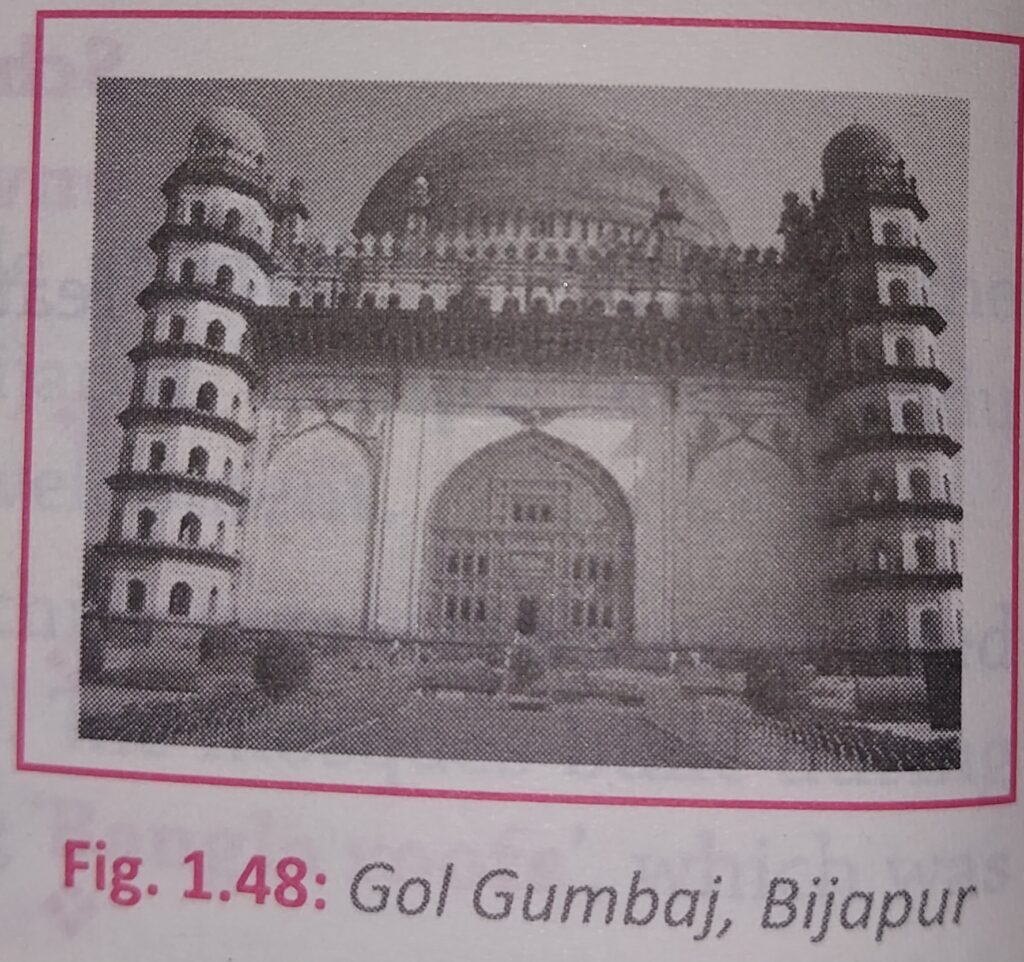The Islamic rulers were living on the borders of the Indian subcontinent for many years. Still, the fall of Sindh started the process of establishing an empire in India and it was ensured by Muhammad Gauri when he defeated Prithviraj Chauhan in the 2nd battle of Tarrain. During the Medieval Age, new regional, empires emerged in Eastern India, North-western India and Kashmir. Thus, Medieval Indian art emerged in the 8th century AD when Sindh was conquered by Islamic rulers and continued till the mid-18th century AD.
Also Read : Ancient Edicts and Inscriptions
Regional Temple Architecture in India
Arts in India – Introduction and Classification
Common Features of Indo-Islamic Architecture
The Islamic rulers introduced new elements in the field of art and culture in India that with the mixing of Indian art resulted in the emergence of new Indo-Islamic style of architecture. The arch and domes and use of minars around mosques and mausoleums were introduced by Turkish rulers in India. Mortar was as cementing agent in construction and they avoided use human and animal figures.

In this style, calligraphy had a significant place which was designed by the Arabesque method (use of geometrical vegetal ornamentation). The jaali works were another attraction and they use water in form of pools, fountains and small drains. The Islamic rulers introduced Charbagh style of gardening and they also used pietra-dura technique for the decoration of walls and they also used foreshortening technique so that inscriptions appear to be closer than it really is.
Architecture During Delhi Sultanate Period
The architecture during Delhi Sultanate can be divided into two categories; Imperial style (patronised by the rulers of Delhi) and Regional or Provincial Style (patronised by the local area rulers of provinces).
Imperial Style
This style was flourished under the rulers of Delhi. The style of slave dynasty was known as Mameluke style of architecture. They focusing on the remodeling of existing Hindu architectures. Qutub Minar was the major architecture of Mameluke style, the project was initiated by Qutab-ud-din Aibak but completed by Iltutmish and 5th floor was added by Firoz Shah Tughlaq.

The Khilji rulers established Seljuk style and this period was marked by use of red sandstone. Mortar began to use as cementing agent. For example, Alai Darwaza built by Alauddin Khilji near Qutub Minar, Siri Fort etc. Tughlaqs used grey sandstone and they combined the arch and lintel method for entrance design and this came to known as “batter”. For example, cities of Tughlaqabad Jahanpanah etc.
Lodhis commissioned only tombs and the idea of double domes was introduced by them to provide height and strength to architecture. The prominent architectures of Lodhi period are Lodhi gardens, city of Agra by Sikander Lodhi etc.
Regional Schools of Indo-Islamic Architecture
The Indo-Islamic architecture initiated by Turkish rulers of Delhi influenced the local rulers of Indian subcontinent which result in the emergence of regional school of architecture.
Malwa School of Architecture
This school also known as the Pathan school of architecture as it was a specimen of environmental adaptation. The cities of Dhar and Mandu were the prominent centres of this school of art. Minars were not used by them. They used locally available materials like stones and marbles of different colors for the construction purposes. Large windows were made in buildings and rooms for proper ventilation.

Baolis (artificial reservoirs) were constructed in the premises for storing water. They used the “batter system” of Tughlaqs for making buildings stronger. For example, Jahaz Mahal, Rani Roopmati pavilion etc.
Bengal and Jaunpur Schools

The bricks and black marble were the main material in the construction of Bengal architecture. They continued the use of sloping ‘Bangla roofs’ which were used in temple constructions. Example, Qadam Rasul mosque in Gaur, Adina Mosque in Padua etc. The Jaunpur school was patronised by Sharqis and they avoided the use of Minars and they also used bold and forceful characters painted on huge screens in centre and side bays of prayer hall. Atala Mosque, Jaunpur etc. were prominent example of Jaunpur school of art.
Bijapur School

The Bijapur school of architecture was patronised under the rule of Adil Shah and it also known as Deccan style of architecture. They constructed several mosques, tombs and palaces with 3-arched façade and bulbous dome which were almost spherical and with a narrow neck. They introduced the use of cornices and iron clamps and a stronger plaster of mortar for giving strength to buildings. For example, Gol Gumbaj, mausoleum of Adil Shah in Bijapur, is a prominent example of the Bijapur school of art.
Thus, the establishing the Turkish rule in India bring significant changes in the field architecture of Indian subcontinent

Pingback: Mughal Architecture (c. 1526 – mid. 18th Century AD) -
Pingback: Architecture Style of Sikh, Rajput, and Kashmir Rulers -